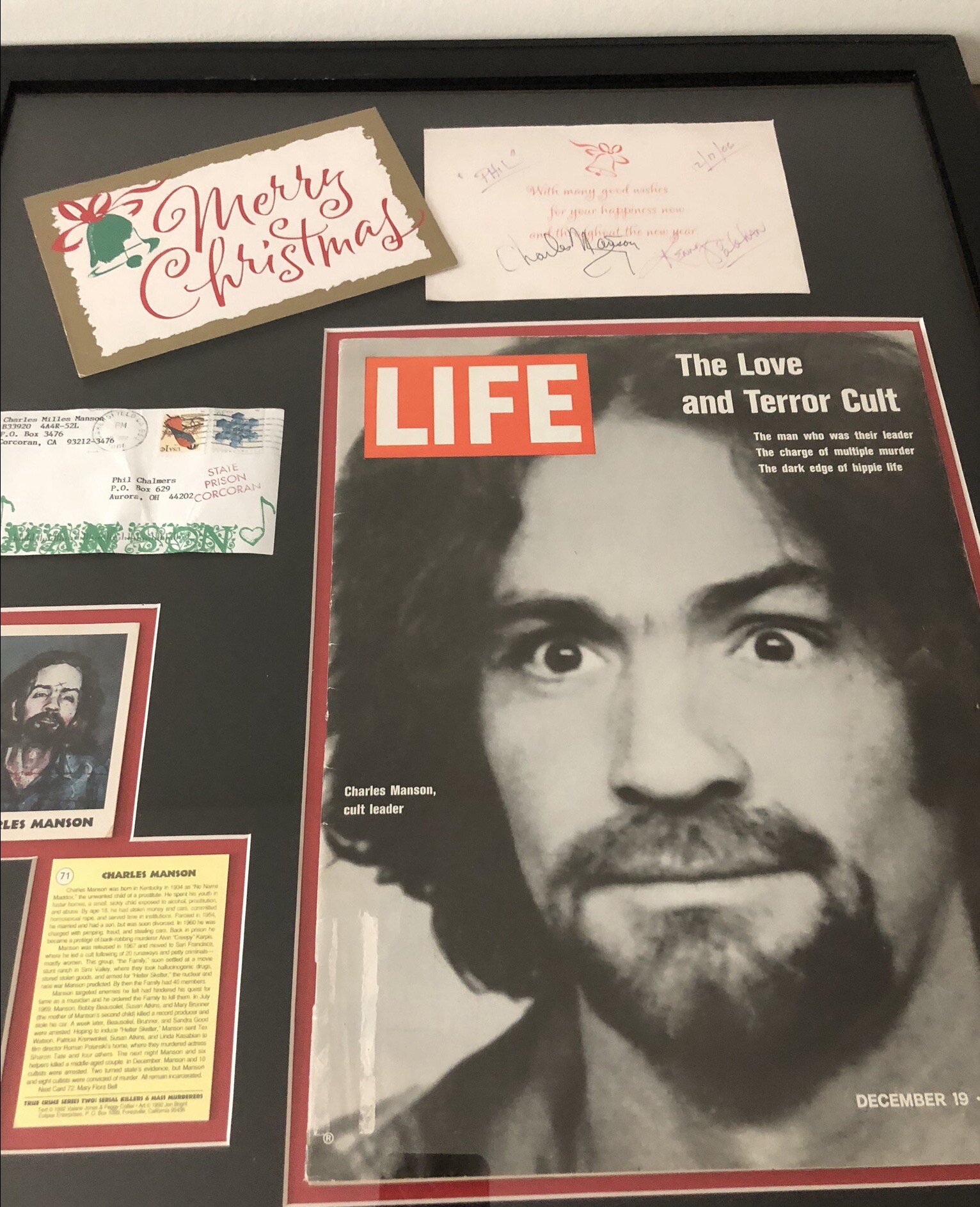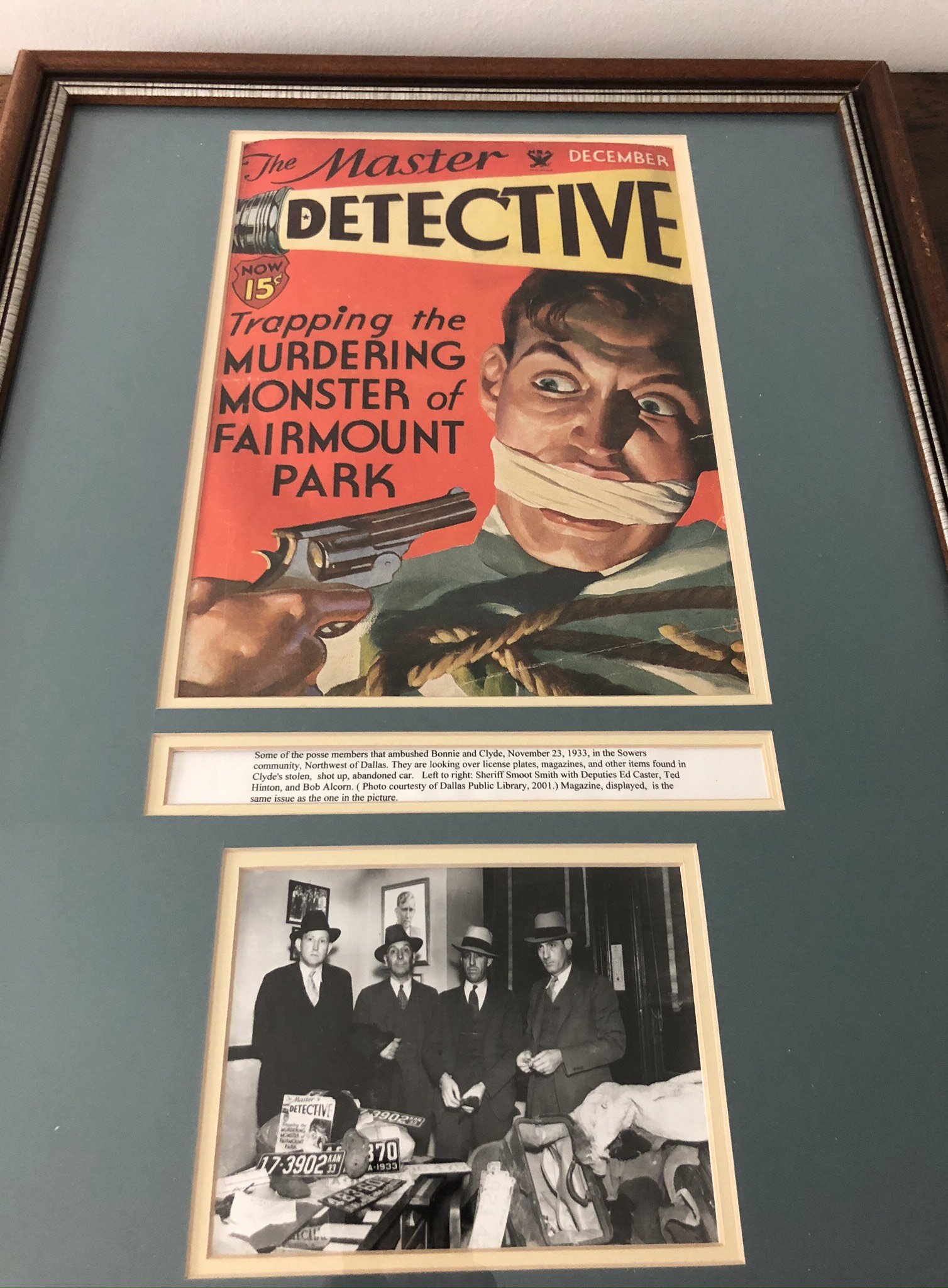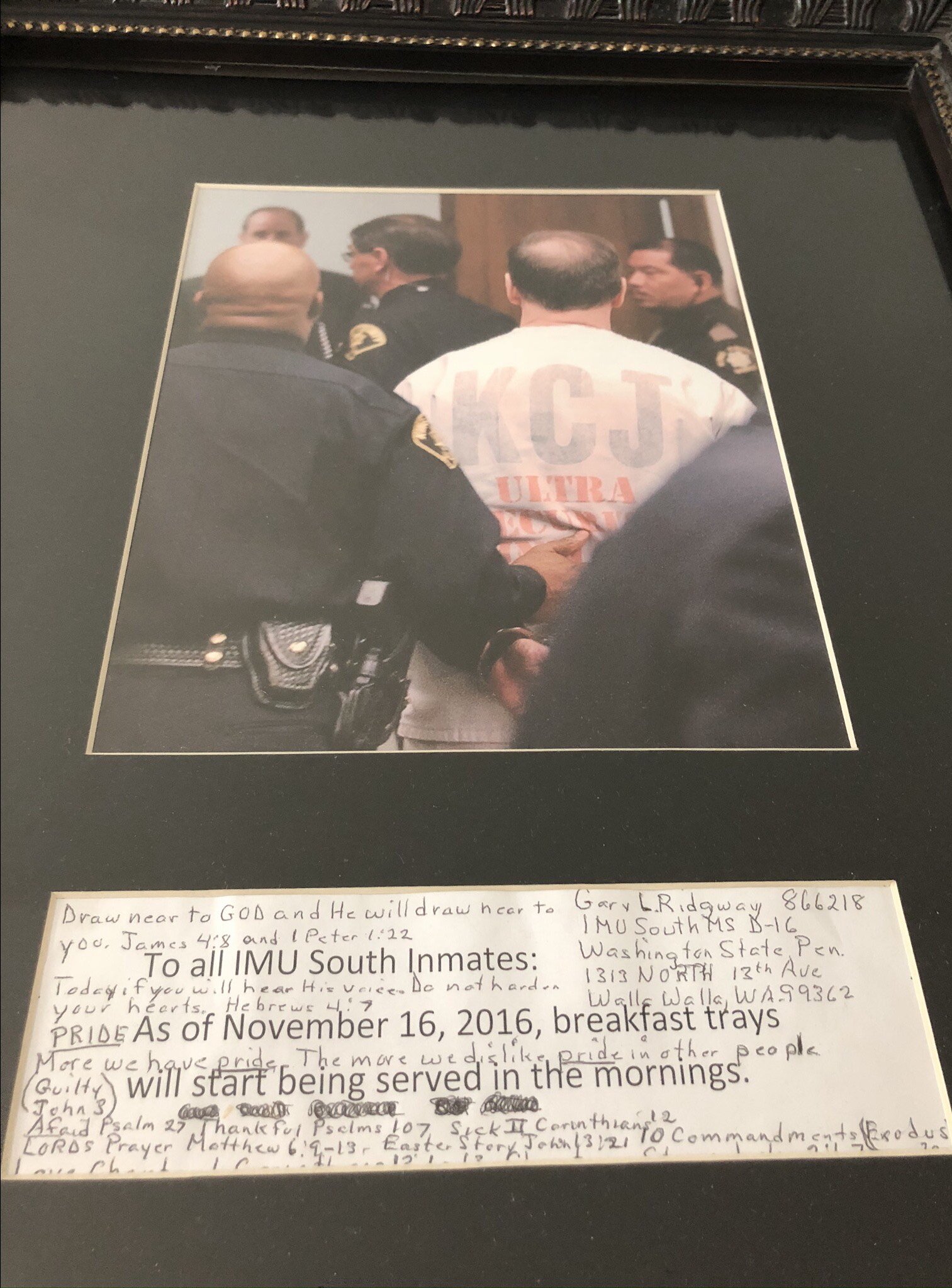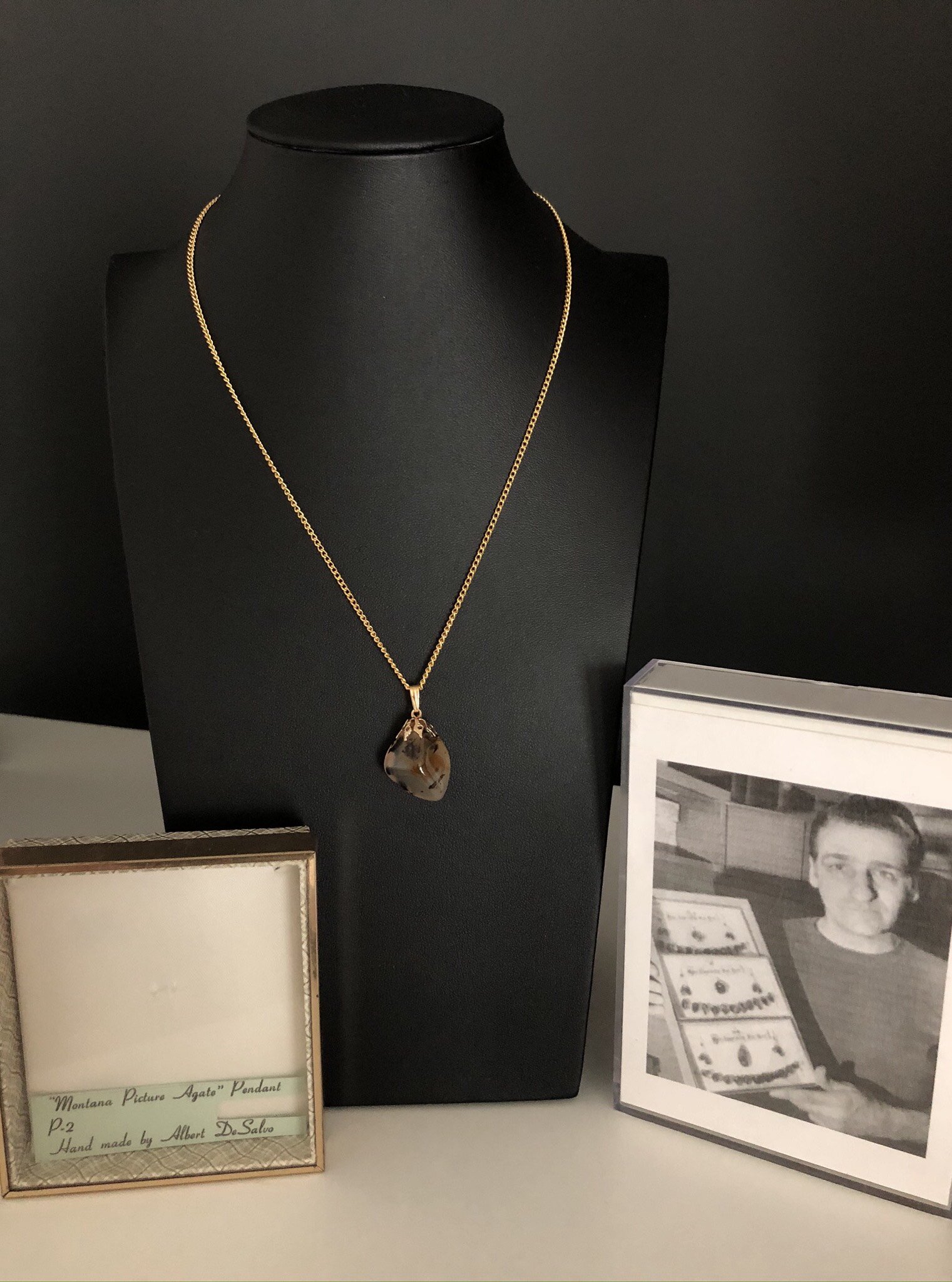Phil Chalmers (right) talks to serial killer and Indiana Death Row inmate, William Clyde Gibson (left).
by: Maddie Rowley
When Phil Chalmers goes to a party and someone inevitably asks the question “so, what do you do for work?” his answer definitely stands out from the crowd.
Chalmers, who recently launched top-ranked podcast “Where the Bodies are Buried” corresponds with hundreds of serial killers and teen school shooters in order to glean more details about their crimes. His goal is to help victims and their families get closure by trying to tease out new information from these killers that might lead to new evidence or even to victims’ remains.
Though the serial killers he interviews have been sentenced and are locked up for life or are sitting on death row, Chalmers knows that oftentimes, they’ve murdered many more victims than they’ve been formally charged for—and these “gray area” crimes are the ones that he targets with the hopes to elicit more confessions.
Chalmers has written letters and talked on the phone with the likes of Dellmus Colvin, aka the “Interstate Strangler,” David Berkowitz, aka the “Son of Sam” (who now refers to himself as the “Son of Hope” after converting to Christianity in prison), and John Robert Williams, a long-haul trucker who targeted and killed prostitutes at truck stops.
Before our interview, Chalmers said he had just gotten off the phone with Christopher Scarver, a convicted murderer who, while incarcerated at the Columbia Correctional Institution, murdered serial killer Jeffrey Dahmer and killer Jesse Anderson while the three men were left unattended as they cleaned the gym bathrooms.
“He asked for a good attorney, so I’ll try my best to help him with that,” said Chalmers.
There’s a delicate balance to strike when it comes to interacting with these serial killers. Much of it involves building trust and even a friendly rapport with them. They often ask Chalmers for something in return for the information they give him, whether it’s food, a TV for their cell, or reading materials. One serial killer specifically asked for photos of planes from World War II.
“I rarely say ‘no’ to their requests,” Chalmers said. “I try everything in my power to get them what they ask for because that’s just how it works.”
One of the main questions I had for Chalmers was, why? Why and how did he decide to start interviewing serial killers?
“I was raised in a dysfunctional family in Cleveland, Ohio. My father was an abusive alcoholic and I just grew up around crime,” Chalmers said. Many serial killers (not all of them as Chalmers points out in his podcast episodes) also grow up in very unstable environments with parents who were either absent, were abusive, or had other issues. Chalmers said he could resonate with the difficult aspects of such an upbringing and that’s when he started interviewing violent offenders. He uses this commonality as leverage during interviews to level with the killers and say “hey, I had a difficult childhood, too,”
If you listen to Where the Bodies are Buried, you get a sense for Chalmers’ steady-as-she-goes interviewing style right away. He makes the questions seem effortless, but many times, there’s a lot at stake with each and every question because it isn’t guaranteed when he’ll be able to talk to the offender next.
Chalmers develops a relationship with these serial killers so that they become familiar and comfortable with him as he builds up their trust. Through the years, killers such as John Wayne Gacy (aka the Killer Clown), Charles Manson, and Albert DeSalvo (aka The Boston Strangler) have sent him gifts in the mail to include paintings, letters, money, and one killer even sent him a playable violin made out of popsicle sticks.
You’ll also hear the disturbing (don’t say I didn’t warn you) details from each serial killer as Chalmers talks to them. I think my jaw was on the floor for his entire conversation with William Clyde Gibson (serial killer on death row in Indiana), so prepare yourself for that one.
I asked Chalmers if the nature of his interviews, with all the gory details and evil, tragic stories, ever take a mental toll on him.
“If you’re asking me how I sleep at night, I sleep great,” Chalmers said. “I’m able to interview someone and then I don’t really think about it again until I have to. My wife, Wendi, and I live a very normal, happy life, we love jazz music, we love Disney. Yeah, it really doesn’t affect me.”
He says his cell phone could ring at anytime of the day or night and if there’s a serial killer on the other end of the line, he answers it.
“It’s really a 24-7 job,” Chalmers said. “If I’m at the beach or on vacation and my phone rings, I leave to answer it and I scramble to get my recording equipment because who knows when I’ll be able to talk to them next?”
Chalmers has so far helped solve several cases through his interviews and he recently tipped off detectives in Illinois after one of his many conversations with killer Dellmus Colvin, who confessed that one of his victims’ remains might still be in the woods behind a truck wash in Peru, Illinois.
One thing I found interesting while listening to Where the Bodies are Buried, was the stark difference in demeanor between teen school shooters and serial killers. Though they often share the same trait in having tumultuous childhoods, the teen school shooters who Chalmers talks to are extremely remorseful for their actions for the most part, while serial killers are not, (with the exception of David Berkowitz who, in his podcast episode, said he felt bad about the murders he had committed, and who even knows if he’s being truthful).
Chalmers explained that serial killers like Dellmus Colvin for example, believe that the women he killed deserved it. They’re psychopaths who are addicted to killing and they continuously seek the high that comes from taking a life and carrying out any of their various sexual perversions. Serial killers aren’t capable of rehabilitation because they almost always kill again.
In addition to the podcast, Chalmers teaches homicide classes and tours around the country to help dispel common serial killer myths. For example, there might be some traits that serial killers have in common, (ie: bed wetting, harming animals, starting fires) but really more often than not, serial killers differ from one another and the more that Chalmers interviews them, the more he’s realized that no one serial killer is the same pattern or past.
We’re looking forward to more episodes of Where the Bodies are Buried and a possible TV show that Chalmers has in the works. You can follow Phil on Twitter at @philchalmersTV and on Instagram at @truecrimephil and you can follow his podcast on Instagram at @wherethebodiesareburied.








